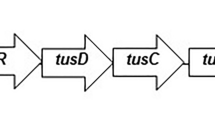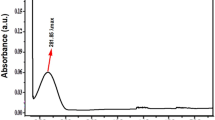Abstract
The increasing incidence of multidrug resistant uropathogenic E. coli (MDR-UPEC), the most common opportunistic pathogen in urinary tract infections (UTI) pose a global health problem and demands searching for alternative therapeutics. Antibiotics generate oxidative stress in bacteria which results in overexpression of the universal stress protein, UspA that helps in bacterial survival. An in silico study showed that two compounds ZINC000104153710, and ZINC000000217308 effectively bound bacterial UspA. This study aimed to determine the activity of ZINC000104153710, and ZINC000000217308 against bacterial UspA function in MDR-UPEC in vitro. Twenty-five highly MDR-UPEC were screened against ZINC000104153710, and, ZINC000000217308 either alone or in combination with the bactericidal antibiotics; ciprofloxacin (CIP), ceftazidime(CAZ), gentamicin(GEN) respectively by determining minimum inhibitory concentrations (MICs) using a broth microdilution assay. Additionally, the effect of ZINC000104153710, and ZINC000000217308 in the absence and presence of antibiotics on the bacteria was monitored by bacterial growth curve assays, ROS production, structure of the organism by scanning electron microscopy (FESEM) and quantitating UspA using a western blot technique. A 2–8 fold reduction in MIC values against ZINC000104153710, and ZINC000000217308 was observed against all 25 MDR-UPEC isolates in the presence of antibiotics with no alteration in intracellular ROS production. Discrete changes in cell morphology was evident in bacteria treated with ZINC000104153710 or ZINC000000217308 and antibiotics individually by FESEM compared with untreated control. Reduction in the level of UspA protein in bacteria treated with combination of ZINC000104153710 or ZINC000000217308 with individual antibiotics established their ability to inhibit UspA whose expression was elevated in presence of antibiotics alone. Therefore this study validated ZINC000104153710, and ZINC000000217308 as potent inhibitors of bacterial UspA function and indicated their potential as alternative therapeutics to combat the MDR-UPEC.
This is a preview of subscription content, access via your institution
Access options
Subscribe to this journal
Receive 12 print issues and online access
$259.00 per year
only $21.58 per issue
Buy this article
- Purchase on Springer Link
- Instant access to full article PDF
Prices may be subject to local taxes which are calculated during checkout





Similar content being viewed by others
References
Daneman N, Chateau D, Dahl M, Zhang J, Fisheret A, Sketris IS, et al. Fluoroquinolone use for uncomplicated urinary tract infections in women: a retrospective cohort study. Clin Microbiol Infect. 2020;26:613–8. https://doi.org/10.1016/j.cmi.2019.10.016.
Rowe TA, Mehta MJ. Urinary tract infection in older adults. NIH Public Access. 2013;9. https://doi.org/10.2217/ahe.13.38.
Foxman B. Epidemiology of urinary tract infections: incidence, morbidity, and economic costs. Am J Med. 2002;113.
Kot B. Antibiotic resistance among uropathogenic Escherichia coli. Pol J Microbiol. 2019;68:403–15. https://doi.org/10.33073/PJM-2019-048.
Bartoletti R, Cai T, Wagenlehner FM, Naber K, Johansen TEB. Treatment of Urinary Tract Infections and Antibiotic Stewardship. Eur. Urol. Suppl. 2016;15:81–87. https://doi.org/10.1016/j.eursup.2016.04.003.
Dwyer DJ, Camacho DM, Kohanski MA, Callura JM, Collins JJ. Antibiotic-Induced Bacterial Cell Death Exhibits Physiological and Biochemical Hallmarks of Apoptosis. Mol Cell. 2012;46:561–72. https://doi.org/10.1016/j.molcel.2012.04.027.
Van Acker H, Gielis J, Acke M, Cools F, Cos P, Coenye T. The role of reactive oxygen species in antibiotic-induced cell death in Burkholderia cepacia complex bacteria. PLoS One. 2016;11:1–20. https://doi.org/10.1371/journal.pone.0159837.
Bandyopadhyay D, Mukherjee M. Reactive oxygen species and UspA overexpession: an alternative bacterial response toward selection and maintenance of multidrug resistance in clinical isolates of uropathogenic E. coli. Eur J Clin Microbiol Infect Dis. 2020. https://doi.org/10.1007/s10096-020-03903-x.
Kvint K, Nachin L, Diez A, Nyström T. The bacterial universal stress protein: function and regulation. Curr Opin Microbiol 2003;6:140–5.
Elhosseiny NM, Amin MA, Yassin AS, Attia AS. Acinetobacter baumannii universal stress protein A plays a pivotal role in stress response and is essential for pneumonia and sepsis pathogenesis. Int J Med Microbiol. 2015;305:114–23. https://doi.org/10.1016/j.ijmm.2014.11.008.
O’Connor A, McClean S. The role of universal stress proteins in bacterial infections. Curr Med Chem. 2017;24:3970–9. https://doi.org/10.2174/0929867324666170124145543.
O’Toole R, Williams HD. Universal stress proteins and Mycobacterium tuberculosis. Res Microbiol. 2003;154:387–92. https://doi.org/10.1016/S0923-2508(03)00081-0.
Waack U, Johnson TL, Chedid K, Xi C, Simmons LA, Mobley HLT, et al. Targeting the type II secretion system: Development, optimization, and validation of a high-throughput screen for the identification of small molecule inhibitors. Front. Cell. Infect. Microbiol. 2017;7:1–12. https://doi.org/10.3389/fcimb.2017.00380.
Felise HB, Nguyen HV, Pfuetzner RA, Barry KC, Jackson SR, Blanc MP, et al. An Inhibitor of Gram-Negative Bacterial Virulence Protein Secretion. Cell Host Microbe. 2008;4:325–36. https://doi.org/10.1016/j.chom.2008.08.001.
Bandyopadhyay D, Singh G, Mukherjee M, Akhter Y. Computational approach towards the design of novel inhibitor against universal stress protein A to combat multidrug resistant uropathogenic Escherichia coli. J Mol Struct. 2021;1238:130379. https://doi.org/10.1016/j.molstruc.2021.130379.
Zhang Q, Lyu Y, Huang J, Zhang X, Yu N, Wen Z, et al. Antibacterial activity and mechanism of sanguinarine against providencia rettgeri in vitro. PeerJ. 2020;8 https://doi.org/10.7717/peerj.9543.
Ma L, Gao Y, Maresso AW. Escherichia coli free radical-based killing mechanism driven by a unique combination of iron restriction and certain antibiotics. J Bacteriol. 2015;197:3708–19. https://doi.org/10.1128/jb.00758-15.
Field LM, Fagerberg WR, Gatto KK, Anne Böttger S. A comparison of protein extraction methods optimizing high protein yields from marine algae and cyanobacteria. J Appl Phycol. 2017;29:1271–8. https://doi.org/10.1007/s10811-016-1027-9.
Woods Ignatoski KM. Immunoprecipitation and Western Blotting of Phosphotyrosine-Containing Proteins. Methods in Molecular Biology. 2001;124:39–48. https://doi.org/10.1385/1-59259-059-4.39.
Gallo-Oller G, Ordoñez R, Dotor J. A new background subtraction method for Western blot densitometry band quantification through image analysis software. J Immunol Methods. 2018;457:1–5. https://doi.org/10.1016/j.jim.2018.03.004.
Qian W, Sun Z, Wang T, Yang M, Liu M, Zhang J, et al. Antimicrobial activity of eugenol against carbapenem-resistant Klebsiella pneumoniae and its effect on biofilms. Microb Pathog 2020;139. https://doi.org/10.1016/j.micpath.2019.103924.
Farrag HA, Abdallah N, Shehata MMK, Awad EM. Natural outer membrane permeabilizers boost antibiotic action against irradiated resistant bacteria. J Biomed Sci. 2019;26:1–14. https://doi.org/10.1186/s12929-019-0561-6.
Annunziato G. Strategies to overcome antimicrobial resistance (AMR) making use of non-essential target inhibitors: A review. Int J Mol Sci. 2019;20. https://doi.org/10.3390/ijms20235844.
Su HL, Chou CC, Hung DJ, Lin SH, Pao IC, Lin JH, et al. The disruption of bacterial membrane integrity through ROS generation induced by nanohybrids of silver and clay. Biomaterials. 2009;30:5979–87. https://doi.org/10.1016/j.biomaterials.2009.07.030.
Liu IF, Sutherland JH, Cheng B, Tse-Dinh YC. Topoisomerase I function during Escherichia coli response to antibiotics and stress enhances cell killing from stabilization of its cleavage complex. J Antimicrob Chemother. 2011;66:1518–24. https://doi.org/10.1093/jac/dkr150.
Acknowledgements
We are grateful to Director, School of Tropical Medicine, and Prof (Dr.) Bibhuti Saha Head, Department of Tropical Medicine, School of Tropical Medicine, Kolkata West Bengal, India, for their kind support.
Funding
This work was supported by a grant from the Department of Biotechnology, Government of West Bengal Grant no. 62(Sanc.)/BT/P/Budget/RD-60/2017 dated 12.03.18.
Author information
Authors and Affiliations
Contributions
DB and MM have designed the experiments. DB performed the experiments, analysed the data, and wrote the manuscript draft. MM validated the consistency of the results and also edited the final version of the manuscript.
Corresponding author
Ethics declarations
Conflict of interest
The authors declare no competing interests.
Ethics approval
The present study was approved by the Clinical Research Ethics Committee, School of Tropical Medicine, Kolkata (CREC-STM, Ref no. CREC-STM/387 dated 09/09/17) and informed consent was obtained from all patients for being included in this study.
Additional information
Publisher’s note Springer Nature remains neutral with regard to jurisdictional claims in published maps and institutional affiliations.
Supplementary information
Rights and permissions
About this article
Cite this article
Bandyopadhyay, D., Mukherjee, M. Combination of bactericidal antibiotics and inhibitors of Universal stress protein A (UspA): a potential therapeutic alternative against multidrug resistant Escherichia coli in urinary tract infections. J Antibiot 75, 21–28 (2022). https://doi.org/10.1038/s41429-021-00477-4
Received:
Revised:
Accepted:
Published:
Issue Date:
DOI: https://doi.org/10.1038/s41429-021-00477-4



